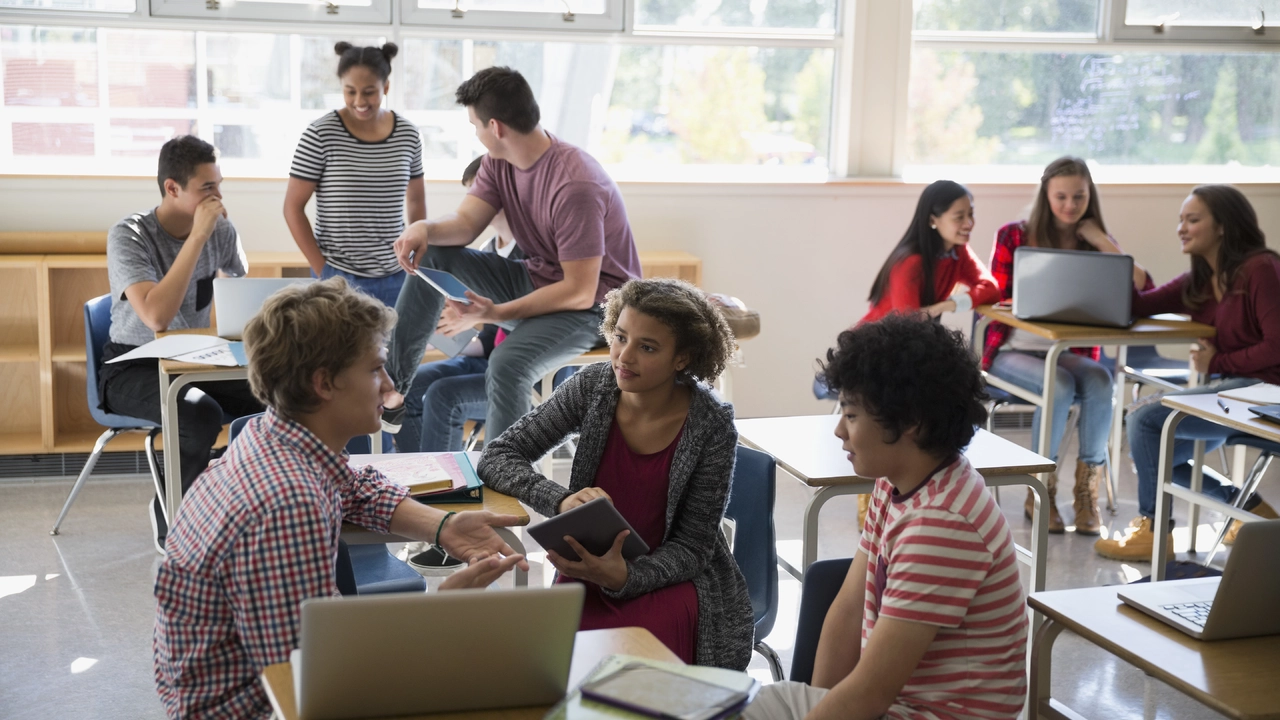
Exploring The Flipped Classroom Paradigm
Picture this: you're ensconced in your favorite chair, headphones on, being guided through the enigma of quantum physics or diving into Shakespeare's nuanced motifs in 'Hamlet'. You're leisurely scribbling insights or perhaps relishing a mug of hot tea, with Toffee, the beagle, snuggled up by your side. An appealing vision, isn't it? It's not a mere dream anymore. Enter the Flipped Classroom Model, also known to some as the Inverted Classroom. Its genesis lies in a forward-thinking educational model aiming to revolutionize the age-old teaching paradigms. If your head's spinning a tad trying to grasp this shift, fret not. We're about to embark on a thorough exploration of this transformative concept.
Deciphering the Origins of the Flipped Classroom
Set sail with me to chart the birth and evolution of the Flipped Classroom Model. The call to change from conventional lecture-driven methods echoed loudly in the early 21st century. Pioneers Jonathan Bergmann and Aaron Sams, moved by the challenges faced by students, pioneered this revolutionary idea. What started as recorded lectures for home viewing to support their pupils soon transcended the traditional classroom boundaries. Today, this avant-garde approach spans a multitude of academic institutions, making learning more personalized and centered around the student.
Decoding the Flipped Methodology
Let's dissect this intriguing model. Think of it as a cherished family recipe, passed down but continuously tweaked and perfected by each generation. At its core, the flipped classroom shuffles two primary academic tasks: content delivery and assignments. The age-old in-class lectures now transition to the home environment, thanks to tech advancements, with the conventional homework finding its space within the classroom's interactive confines. These curated video lectures by educators are available for students at their convenience, and classroom hours become a lively hub of concept application, exploration, and reinforcement. Sounds invigorating, right?
Navigating the Advantages
Diving deeper, what makes the flipped classroom so alluring? Beyond the refreshing pedagogical shift lie tangible, compelling benefits. Firstly, it gifts students the autonomy of self-paced understanding. Gone are the days of hurried note-taking; now, learners can pause, rewind, and review as per their needs. This method actively nurtures an invigorated classroom ambiance, fosters discussions, and immediately addresses queries. What's more, it cultivates indispensable 21st-century competencies such as critical thinking, creative problem-solving, and autonomous learning. It's akin to relishing a lavish weekend brunch with companions.
Overcoming the Obstacles
Now, every silver lining might have a cloud. The flipped classroom does pose challenges. Unequal access to requisite technology for home-based lectures poses a considerable hurdle. The pronounced reliance on digital means can widen the technology access disparity. Additionally, educators face the intricate balancing act of being both content creators and academic facilitators. While some learners may need time to warm up to this non-traditional setup, with dedication and resilience, navigating this model becomes a mastered skill.
Personal Dive into the Inverted Realm
Allow me a moment of personal reflection. My passion for knowledge recently led me to an online course structured around the flipped model. The experience? Utterly transformative. It permitted me to delve into topics at my rhythm, enriching my comprehension. The weekly interactive segments enhanced my understanding, fostering lively dialogues, diverse viewpoints, and in-depth topic analyses. It felt as exhilarating as sinking into a gripping novel, but with fellow enthusiasts sharing the literary voyage.
Envisioning Tomorrow's Learning Spaces
Looking ahead from our current vantage point in 2023, the Flipped Classroom stands as a beacon for future education. In an era dominated by digital metamorphosis, arming upcoming generations with relevant tools and abilities becomes paramount. The Inverted Classroom transcends being just a pedagogic technique; it represents a holistic shift toward a balanced, inclusive, and dynamic educational setting. It's a tidal wave of change, demanding time and commitment, but the results? Monumental. So, as we embrace this epoch, consider reaching out to resources like professional thesis writers to further hone your academic prowess. Gear up, fellow learners; a riveting educational renaissance awaits!